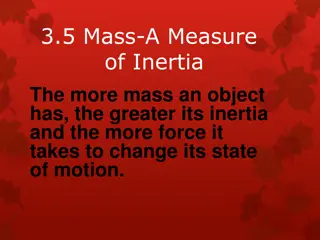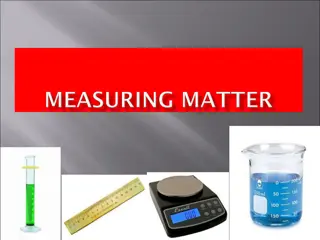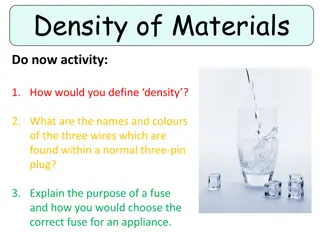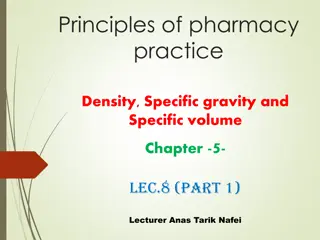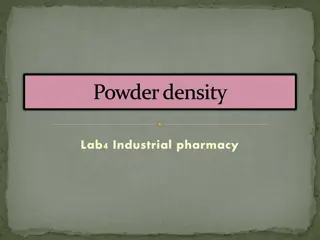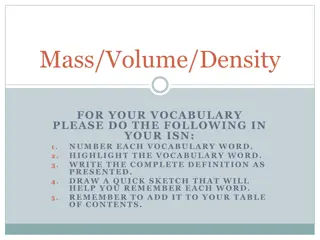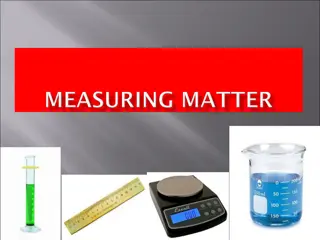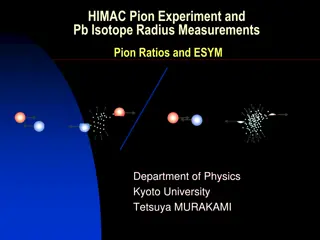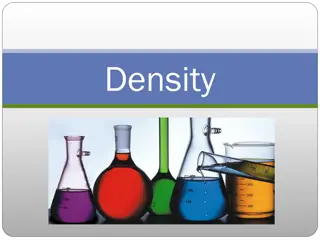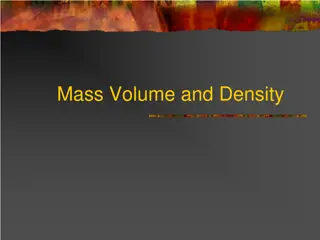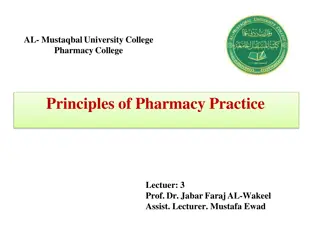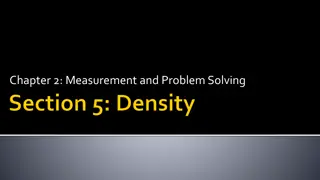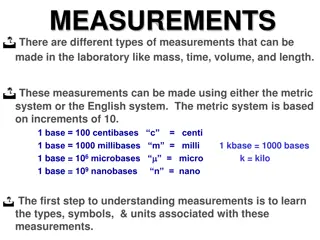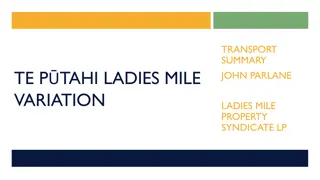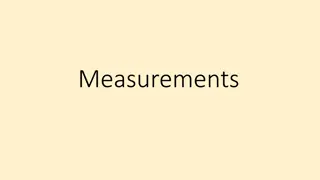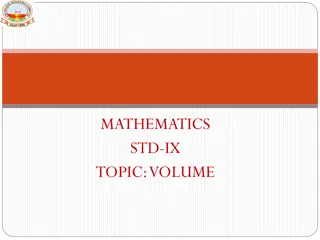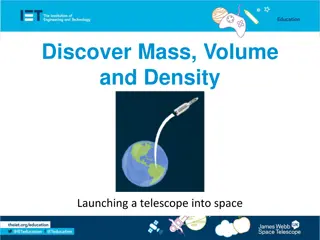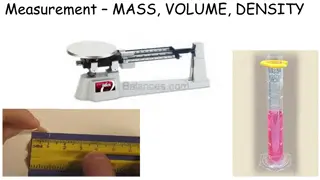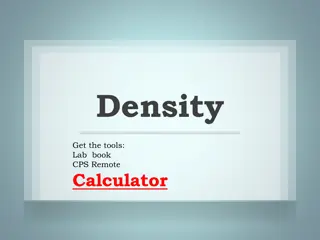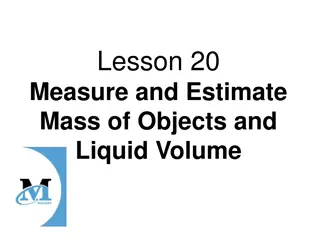Essential Science Concepts: Mass, Volume, Density, Measurements
Discover key science concepts such as mass, volume, density, and measurement techniques. Explore tools like triple beam balances and graduated cylinders. Learn about the density of water and how to calculate densities of objects. Dive into the world of scientific measurements and units.
Download Presentation

Please find below an Image/Link to download the presentation.
The content on the website is provided AS IS for your information and personal use only. It may not be sold, licensed, or shared on other websites without obtaining consent from the author.If you encounter any issues during the download, it is possible that the publisher has removed the file from their server.
You are allowed to download the files provided on this website for personal or commercial use, subject to the condition that they are used lawfully. All files are the property of their respective owners.
The content on the website is provided AS IS for your information and personal use only. It may not be sold, licensed, or shared on other websites without obtaining consent from the author.
E N D
Presentation Transcript
1. The amount of mass in a given volume is known as.... A. Volume B. Density C. Mass D. Molecule
What is the proper measurement for this meter stick? 2. cm A. 41.8 cm B. 41.6 cm C. 40 in D. 40 cm
3. How do you measure the mass of an object? A. Measure length, width and height B. Use a triple beam balance C. Fill up a graduated cylinder D. An educated guess 4. How do you find the volume of a rectangular shaped object? A.Place in triple beam balance C. f = m X B. Length X height D. length X width X height
5. Identify the correct tool that would be used to measure: a. b. c. Length is measured by ______________________ Mass is measured by ________________________ Temperature is measured by __________________
Find the density! Mass = 45 g. Volume = 15 cm3. 6. A. 30 B. 3 C. 60 D. 5 7. What will be the units for density from the previous question?
The system of measurement that allows people worldwide to compare data is the ___. 8. A. US Customary System B Metric System C. English Standard System D. The Scientific Method 9. What is the proper measurement for this triple beam balance? A. 27.7 g B. 27.7 mL D. 207 g C. 127.7 g
10. What is the density of water? A. 1 g/mL B. 10 g/mL C. 100 g/mL D. 1000 g/mL 11. Volume of a solid is measured by ______ X ________ X _________ 12. Volume of a liquid is measured by using _______________________
13. An irregular object, like a rock, was placed inside a graduated cylinder. How much water was displaced? mL A.23 mL B.3 cm3 C.3 mL D.20 mL
14. Find the density. Mass = 63g. Volume = 9cm3. A. 7 g/cm3 B. 8 g/cm3 C. 12 g/cm3 D. 4 g/cm3 15. Find the density. Mass = 64g. Volume = 8mL. A. 7 g/mL B. 8 g/mL C. 6 g/mL D. 52 g/mL
16. Reading the bottom of the meniscus, the volume in this graduated cylinder is:
The container contains a yellow ball, pink ball, coins, small rocks, pencil, a dark red oak and a light pine oak. List only the items that have a low density. 17. Pine oak Dark red oak
The proper way to read a measurement from a graduated cylinder is: 18. A. The bottom of the meniscus B. The edges of the meniscus C. The line easiest to see D. By raising the graduated cylinder



